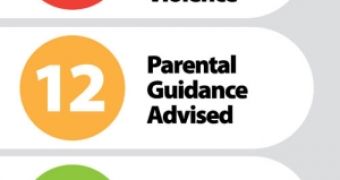Videogame ratings are usually very sensitive stuff. Developers always try to get the lowest rating while still making the game they have envisioned in order to attract more customers. While some companies take pride in producing titles for the whole family, others, like Rockstar, set out from the beginning of a game's development to get a mature rating.
Nowadays, a lot of countries have different rating systems which, in most cases, are quite elaborate, and, according to a recent study, confuse parents who end up buying games which aren't suitable for their children. The United States have the ESRB, the Great Britain has the BBFC and mainland Europe uses the PEGI, or Pan European Game Information standard of rating for the games marketed on that territory.
According to a recent study made by Dr. Tanya Byron, a lot of European parents don't really understand the rating system created by PEGI and can't make good choices about what games their children could play or not. Such a result made the ELSPA, or Entertainment and Leisure Software Publishers Association, take into consideration a new kind of rating system, based on traffic lights.
“The world of gaming is fast moving and it is vital that we have a clear ratings system that is up to date with consumers’ needs. It has already been proven that everyone understands traffic light labelling, making it the perfect scheme for the industry to adopt,” said a reputed industry source, cited by the ELSPA.
The system is still under development and has not been approved yet. It will employ the colors used in traffic lights - green, yellow and red - in order to mark games according to their target age group. Titles marked with green can be bought for children of all ages while yellow and red marked ones are limited to children or teens over distinct ages such as 12, 16 or 18 years.
While the initiative is pretty interesting, it will still be difficult for parents to decide what games they should buy for their children because most of the times they rely on their offspring to choose the titles they like and not pay any attention to rating systems. Only time will tell whether we get to see traffic lights on the games in store shelves; until then, the old rating systems are still used.

 14 DAY TRIAL //
14 DAY TRIAL //